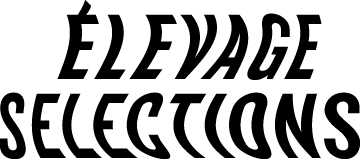Franz Weninger
Burgenland, Austria & Hungary
Franz Weninger is a fascinating wine grower working on two sides of the Burgenland border in both Austria and Hungary. Burgenland is like many bordered wine regions in that it shares the culture of the two countries it divides.
Franz is a third-generation winemaker. In the 1980s his father was making wines in Hungary, but primarily for a Parkerized world that wanted rich, heavy, big red wines from Cabernet Sauvignon. The best sites he found for Cabernet were in a German speaking village in Hungary so they started producing wines there. Franz worked for his father during this time where the winemaking was far from natural. He went to work in California in the early 90s and saw the exact same techniques and chemicals used there as in his home and he found the wines to taste the same. Striking Franz as problematic he returned home in 2000 and began to slowly change things.
Franz wanted to express what was special and unique about their land, their culture and their wines so he committed himself to making natural wines, eschewing those additives he saw in California and his home in the 1980 and 90s. For Franz the only way to express terroir is through wines without added synthetic chemicals. Luckily for him, his father had already converted all the vineyards to Biodynamics. They have had healthy soils for a very long time.
Currently the Weningers have 24 hectares in Hungary and 26 in Austria, but they are selling off land to concentrate on their best parcels, a lucky position to be in. Franz’s has a partular passion and vision for Blaufränkisch (called Kékfrankos in Hungary), a red grape local to Burgenland. He believes it is the future of the area, able to express terroir and diversity the way Pinot Noir can in Burgundy. We completely agree, though we love this other wines too.
Franz has an incredible diversity of soil types. The village of Sópron has mainly Mica Schist and Gneiss, whereas Horitschon has Sandy Loam. Other sites have clay, and some with limestone and old fossils littered throughout.
Every year that we taste Franz’s wines we are impressed. Each year they become more focused, more precise and more elegant. We are thrilled to be working with such a talented vigneron
Furmint Vom Kalk (Hungary)
Furmint is a white grape commonly found in the vineyards of Tokaj and relied on for their famous sweet wines. It is however also grown all over Hungary and more modernly used to produced dry wines of incredible tension and purity. Direct Pressed, natural ferment and aged in large foudres for 15 months, this wine has a Savagnin-like tension, saltiness and acidity with lovely citrus and mineral notes. Very low in sulfur.
Feherburgundi (Hungary)
This Pinot Blanc vineyard was planted somewhat by mistake. The Weningers thought they were purchasing Pinot Noir but when the fruit became ripe they realized it was something else. The mistake at the vine nursery means we have a very serious Pinot Blanc from low yielding slate soils. This wine is direct pressed into old puncheons (large oak barrels) where it ferments naturally then rests on its lees for a year before bottling. Very low in sulfur.
Gneiss Es Csillam (Hungary)
Syrah, Zweigelt, Kékfrankos (Blaufränkisch) and Merlot make up this wine from multiple vineyards sites. The idea here is to represent the Gneiss and Mica Schist of the village of Sópron, where all the vineyards lie. Destemmed, fermented in stainless steel with natural yeast, aged in old oak foudres for a year before bottling. Very low in sulfur.
Rotburger Im Fluss (Austria)
Franz has some Zweigelt planted near Horitschon where the souls are mostly sandy loam. This wine undergoes carbonic maceration in stainless steel and sees no oak at all. This is the most juicy and red fruited of the wines we have available from Franz. Very low in sulfur.
Kékfrankos Balf (Hungary)
Kékfrankos is the Hungarian name for Blaufränkisch. The fruit for this wine comes from the village of Balf on lake Neusiedl near the thermal springs. Fruit is hand harvested then gravity fed into Stainless steel tanks where it undergoes natural fermentation and a maceration of about 3 weeks. One year in barrel before bottling. Medium bodied, textured, fresh and bright with good structure and dark fruit. Very low in sulfur.
Blaufränkisch (Austria)
This is a blend of multiple vineyards primarily with clay, loam and limestone soils. Fruit is hand harvested then gravity fed into large barrels. 10 days maceration, natural fermentation. Medium bodied, textured, fresh and bright with elegant structure and dark fruit. Very low in sulfur.
Hochäcker Blaufränkisch (Austria)
Hochäcker is a single vineyard one from one of the oldest sites in Horitschon. The soils are hard, iron-rich and loamy. Vines are 40+ years old. Hand harvested, natural fermentation, 10 days of maceration then aging in 500L barrels for 16 months. Red Fruited, delicate berries, spice and tobacco with freshness and structure. Concentrated and age-worthy. No added sulfur.
Retail
Boutique del Vino at Piazza de Nardi
Ellement Wine & Spirits
Jones & Co. Wine Merchants





